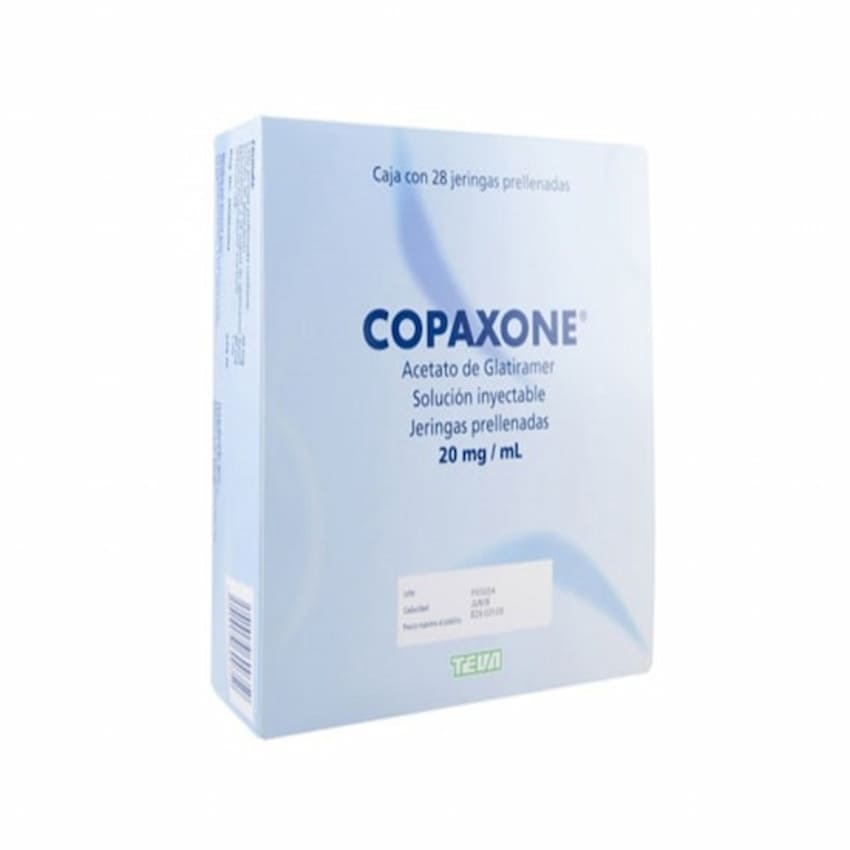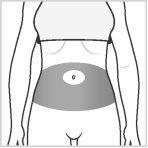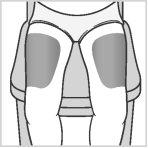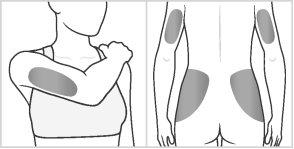

COPAXONE 20 mg/ml SOLUÇÃO INJETÁVEL EM SERINGA PREENCHIDA

Pergunte a um médico sobre a prescrição de COPAXONE 20 mg/ml SOLUÇÃO INJETÁVEL EM SERINGA PREENCHIDA

Como usar COPAXONE 20 mg/ml SOLUÇÃO INJETÁVEL EM SERINGA PREENCHIDA
Introdução
Prospecto: Informação para o utilizador
Copaxone 20 mg/ml solução injetável em seringa pré-carregada
glatiramero, acetato
Leia todo o prospecto atentamente antes de começar a usar este medicamento, porque contém informações importantes para si.
- Conserva este prospecto, porque pode ter que voltar a lê-lo.
- Se tiver alguma dúvida, consulte o seu médico ou farmacêutico.
- Este medicamento foi-lhe prescrito apenas para si, e não deve dá-lo a outras pessoas, mesmo que tenham os mesmos sintomas que si, porque pode prejudicá-las.
- Se experimentar efeitos adversos, consulte o seu médico ou farmacêutico, mesmo que se trate de efeitos adversos que não aparecem neste prospecto. Ver secção 4.
Conteúdo do prospecto:
- O que é Copaxone e para que é utilizado
- O que precisa saber antes de começar a usar Copaxone
- Como usar Copaxone
- Posíveis efeitos adversos
- Conservação de Copaxone
- Conteúdo do envase e informações adicionais
1. O que é Copaxone e para que é utilizado
Copaxone é um medicamento indicado para o tratamento de formas recorrentes de esclerose múltipla (EM). Modifica a forma como funciona o sistema imunológico do seu corpo e é classificado como um agente imunomodulador. Acredita-se que os sintomas de esclerose múltipla (EM) se produzam por um defeito no sistema imunológico do organismo. Isso produz zonas de inflamação no cérebro e na medula espinhal
Copaxone é utilizado para reduzir o número de vezes que si sofre ataques de EM (recaídas). Não se demonstrou que ajude se si padece alguma forma de EM que não tem recaídas, ou quase nenhuma recaída. Copaxone pode não ter efeito algum na duração de um ataque de EM, ou no quanto si se sente mal durante um ataque.
É utilizado para tratar pacientes que podem caminhar sem ajuda.
Copaxone pode ser utilizado também em pacientes que experimentaram sintomas pela primeira vez, que indicam um alto risco de desenvolver EM. O seu médico descartará qualquer outra razão que explique estes sintomas antes de o tratar.
2. O que precisa saber antes de começar a usar Copaxone
Não use Copaxone
- se é alérgico ao acetato de glatiramero ou a qualquer um dos outros componentes deste medicamento (incluídos na secção 6).
Advertências e precauções
Copaxone pode causar reações alérgicas graves, algumas das quais podem ser potencialmente mortais.
Estas reações podem ocorrer pouco após a administração, mesmo meses ou anos após o início do tratamento e mesmo que não se tenham produzido reações alérgicas após administrações anteriores.
Os sinais e sintomas das reações alérgicas podem sobrepor-se com as reações após a injeção. O seu médico informá-lo-á sobre os sinais de uma reação alérgica.
Consulte o seu médico ou farmacêutico antes de começar a usar Copaxone, se si padece algum problema de rim ou de coração, porque pode precisar fazer análises ou reconhecimentos periódicos.
Consulte o seu médico ou farmacêutico antes de começar a usar Copaxone, se tem ou teve problemas de fígado (incluídos os devidos ao consumo de álcool).
Crianças
Copaxone não pode ser utilizado em crianças menores de 12 anos.
Pacientes de idade avançada
Copaxone não foi estudado especificamente em pacientes de idade avançada. Por favor, consulte com o seu médico.
Uso de Copaxone com outros medicamentos
Informa o seu médico ou farmacêutico se está a utilizar, utilizou recentemente ou pode ter que utilizar qualquer outro medicamento.
Gravidez e amamentação
Se está grávida, acredita que possa estar grávida ou tem intenção de ficar grávida, consulte o seu médico sobre o tratamento com Copaxone durante a gravidez.
Copaxone pode ser utilizado durante a gravidez por indicação do seu médico.
Dados limitados em humanos não mostraram efeitos negativos de Copaxone em recém-nascidos/crianças lactantes. Copaxone pode ser utilizado durante a amamentação.
Condução e uso de máquinas
Desconhece-se se Copaxone tem influência sobre a capacidade para conduzir ou manejar máquinas.
3. Como usar Copaxone
Siga exatamente as instruções de administração deste medicamento indicadas pelo seu médico. Em caso de dúvida, consulte novamente o seu médico ou farmacêutico.
A dose recomendada diária em adultos e adolescentes a partir de 12 anos é uma seringa pré-carregada (20 mg de acetato de glatiramero), administrada sob a pele (por via subcutânea).
É muito importante que a injeção de Copaxone seja realizada corretamente:
- Apenas dentro do tecido debaixo da pele (uso subcutâneo) (ver “Instruções de uso”)
- À dose indicada pelo seu médico. Use apenas a dose prescrita pelo seu médico.
- Nunca utilize a mesma seringa mais de uma vez. Qualquer produto não utilizado ou sobrante deve ser descartado.
- Não misture ou coadministre o conteúdo das seringas pré-carregadas de Copaxone com qualquer outro produto.
- Se a solução contém partículas, não a utilize. Use uma seringa nova.
A primeira vez que utilizar Copaxone, será dado instruções completas e será supervisionado por um médico ou uma enfermeira. Eles estarão com si durante a injeção e meia hora mais tarde, apenas para se certificar de que não tem nenhum problema.
Instruções de uso
Leia estas instruções cuidadosamente antes de utilizar Copaxone.
Antes da injeção, certifique-se de que tem tudo o que precisa:
- Um blister com uma seringa pré-carregada de Copaxone solução injetável.
- Um contentor para descartar as agulhas e seringas usadas.
- Para cada injeção, retire apenas um blister com uma seringa pré-carregada, do envase. Mantenha o resto das seringas na caixa.
- Se a sua seringa estava na geladeira, retire o blister que contém a seringa pelo menos 20 minutos antes de que vá injetar o medicamento, assim se aquecerá até a temperatura ambiente.
Lave as mãos energicamente com água e sabão.
Se deseja utilizar um dispositivo para injeção para se injetar, o dispositivo CSYNC pode ser utilizado com Copaxone. O dispositivo CSYNC está apenas autorizado para ser utilizado com COPAXONE e não foi testado com outros produtos. Por favor, consulte as instruções de uso fornecidas juntamente com o dispositivo para injeção CSYNC.
Escolha um local para a injeção dentro das áreas, seguindo os diagramas.
Há sete possíveis zonas para a injeção no seu corpo:
Área 1: Área do estômago (abdomen) ao redor do umbigo. Evite colocar a injeção 5 cm a cada lado do umbigo.

Áreas 2 e 3: Cochas (sobre os joelhos)

Áreas 4, 5, 6 e 7: Parte superior dos braços, e parte superior das ancas (debaixo da cintura)

Dentro de cada área de injeção existem múltiplos locais para a injeção. Escolha cada dia um local diferente para colocar a injeção. Assim reduzirá a possibilidade de irritação ou de dor no local da injeção. Altere as áreas de injeção e também altere o local para a injeção dentro de cada área. Não use sempre o mesmo local para a injeção.
Advertência: não se injete em nenhuma zona que esteja dolorida ou sem cor, ou em que si note nódulos ou bultos firmes.
Recomenda-se ter um esquema com os locais para a injeção planeados, e anotá-lo em um diário. Existem alguns locais no seu corpo que podem ser difíceis para a auto-injeção (como a parte de trás do seu braço). Se quiser usá-los, pode precisar de ajuda.
Como injetar:
- Retire a seringa do blister protetor despegando a cobertura do blister.
- Retire o capuchão da agulha, não retireo protetor com a boca ou os dentes.
- Pegue suavemente a pele fazendo um dobro entre o dedo polegar e índice da mão livre (Figura 1).
- Com suavidade, introduza a agulha na pele como se mostra na Figura 2.
- Injete o medicamento empurrando o êmbolo, firmemente até o topo, ficando a seringa vazia
- Retire a seringa e a agulha.
- Descarte a seringa em um contentor seguro para produtos descartáveis. Não jogue as seringas usadas no lixo, coloque-as cuidadosamente em um contentor à prova de picadas como o seu médico ou enfermeira recomendou.


Figura 1 Figura 2
Se tiver a impressão de que o efeito de Copaxone é demasiado forte ou débil, comunique ao seu médico.
Se usar mais Copaxone do que deve
Em caso de sobredosagem ou ingestão acidental, consulte imediatamente o seu médico, farmacêutico ou ligue para o Serviço de Informação Toxicológica, telefone 915620420, indicando o medicamento e a quantidade ingerida.
Se esquecer de usar Copaxone
Administre-o assim que se lembrar, mas não administre uma dose dupla para compensar as doses esquecidas. Administre a próxima dose 24 horas depois.
Se interromper o tratamento com Copaxone
Não deixe de usar Copaxone sem consultar o seu médico
Se tiver alguma outra dúvida sobre o uso deste medicamento, pergunte ao seu médico ou farmacêutico.
4. Posíveis efeitos adversos
Como todos os medicamentos, este medicamento pode produzir efeitos adversos, embora nem todas as pessoas os sofram.
Reações alérgicas (hipersensibilidade, reação anafiláctica)
Si pode desenvolver uma reação alérgica grave a este medicamento pouco após a administração. Este é um efeito adverso pouco frequente. Estas reações podem ocorrer meses ou anos após o início do tratamento com Copaxone, mesmo que não se tenham produzido reações alérgicas após administrações anteriores.
Se notar qualquer um dos seguintes efeitos adversos repentinos, deixe de utilizar Copaxone e ligue imediatamente ao seu médico, ou dirija-se ao serviço de urgências do hospital mais próximo:
- erupção cutânea generalizada (manchas vermelhas ou ronchas)
- inflamação das pálpebras, da face, dos lábios, da boca, da garganta ou da língua
- repentina falta de ar, dificuldade para respirar ou sibilância (“pitos” ao respirar)
- convulsões (crise)
- problemas para engolir ou falar
- síncope (desfalecimento), sensação de tontura ou de desmaio
- colapso
Outras reações após a injeção (reação imediatamente após a injeção)
É pouco frequente, mas algumas pessoas podem ter um ou mais dos seguintes sintomas minutos após a injeção de Copaxone. Estes normalmente não supõem nenhum problema e desaparecem em meia hora.
No entanto, se os seguintes sintomas duram mais de 30 minutos, contacte imediatamente o seu médico, ou dirija-se ao serviço de urgências do hospital mais próximo:
- rubor (enrubescimento) do peito ou da face (vasodilatação)
- dificuldade para respirar (dispnéia)
- dor no peito
- batimentos cardíacos rápidos e fortes (palpitações, taquicardia)
Problemas hepáticos (de fígado)
Problemas hepáticos ou piora dos problemas hepáticos, incluindo insuficiência hepática (que em alguns casos levou ao transplante hepático), podem ocorrer raramente com Copaxone. Contacte o seu médico imediatamente se tiver sintomas como:
- náusea
- perda de apetite
- urina de cor escura e fezes de cor pálida
- coloração amarelada da pele ou da parte branca do olho
- sangra mais facilmente do que o normal
Foram comunicados os seguintes efeitos adversos com Copaxone:
Muito frequentes: podem afetar mais de 1 de cada 10 pessoas
- infecções, gripe
- ansiedade, depressão
- dor de cabeça
- náuseas
- erupção cutânea
- dor nas articulações ou nas costas
- sensação de fraqueza, reações da pele no local da injeção que incluem enrubescimento da pele, dor, formação de bolhas, picazão, inchaço dos tecidos, inflamação e hipersensibilidade (estas reações no local da injeção não são anormais e normalmente desaparecem com o tempo), dor inespecífica.
Frequentes: podem afetar até 1 de cada 10 pessoas
- inflamação do trato respiratório, doença gástrica, febre, inflamação dos ouvidos, corrimento nasal, abscessos dentários, candidíase vaginal
- crecimentos na pele não malignos (neoplasias benignas da pele), crescimento de tecido (neoplasia)
- inchaço dos gânglios linfáticos
- reações alérgicas
- perda do apetite, ganho de peso
- nervosismo
- alteração do sentido do gosto, aumento da opressão do tom muscular, enxaqueca, problemas na fala, desvanecimento, tremor
- dupla visão, problemas nos olhos
- problemas de ouvido
- tosse, febre do feno
- problemas anais ou do reto, constipação, cáries dentárias, dispepsia, dificuldade para engolir, incontinência intestinal, vômitos.
- resultados anormais das provas da função hepática
- equimoses, sudorese excessiva, picazão, alterações na pele, urticária
- dor no pescoço
- necessidade de esvaziar rapidamente a bexiga, urinar frequentemente, incapacidade para esvaziar adequadamente a bexiga
- arrepios, inchaço da face, perda de tecido sob a pele no local da injeção, reação local, inchaço periférico por acumulação de líquidos, febre.
Pouco frequentes: podem afetar até 1 de cada 100 pessoas
- abscessos, inflamação da pele e do tecido mole inferior, furúnculos, herpes, inflamação dos rins
- câncer de pele
- aumento da quantidade de glóbulos brancos, diminuição da quantidade de glóbulos brancos, aumento do baço, diminuição da quantidade de plaquetas, alteração na forma dos glóbulos brancos
- aumento do tiroides ou hiperatividade do tiroides
- baixa tolerância ao álcool, gota, aumento dos níveis de gorduras no sangue, aumento do sódio no sangue, diminuição da ferritina no sangue.
- sonhos estranhos, confusão, estado eufórico, ver, ouvir, cheirar, tocar ou sentir coisas que não estão lá (alucinações), agressividade, estado anormalmente feliz, transtornos de personalidade, tentativa de suicídio
- entorpecimento das mãos e dor (síndrome do túnel carpiano), transtornos mentais, crise (convulsão), problemas para escrever e ler, transtornos musculares, problemas com o movimento, espasmos musculares, inflamação dos nervos, conexão anormal nervo-muscular que produz uma função muscular anormal, movimento rápido e involuntário dos globos oculares, paralisia, pé caído (paralisia do nervo peroneo), estado de inconsciência (estupor), manchas visuais cegas
- cataratas, lesões oculares na córnea, secura ocular, sangramento no olho, pálpebra caída, dilatação da pupila, desgaste do nervo óptico que produz problemas visuais.
- batimentos cardíacos de mais, batimentos cardíacos lentos, episódios de batimentos cardíacos rápidos
- varizes
- paradas periódicas da respiração, sangramento nasal, respiração anormalmente rápida ou profunda (hiperventilação), sensação de estreitamento da garganta, problemas nos pulmões, incapacidade para respirar por estreitamento da garganta (sensação de asfixia)
- inflamação do intestino delgado, pólipos no cólon, inflamação do intestino, arrotos, úlcera na garganta, inflamação das gengivas, sangramento retal, aumento das glândulas salivares
- cálculos biliares, aumento do fígado
- inchaço da pele e tecidos moles, erupção cutânea por contato, bultos na pele vermelhos dolorosos, bultos na pele
- inchaço, inflamação e dor nas articulações (artrite ou osteoartrite), inflamação e dor nas bolsas de líquido que cobrem as articulações (existentes em algumas das articulações), dor no lado, diminuição da massa muscular
- sangue na urina, pedras nos rins, problemas no sistema urinário, anomalias na urina
- inchaço dos seios, dificuldade para a ereção, queda ou deslocamento dos órgãos pélvicos (prolapso pélvico), ereções mantidas, alterações da próstata, prova de Papanicolaou com resultados anormais (esfregaço anormal de colo), alterações nos testículos, sangramento vaginal, transtorno vaginal.
- cisto, ressaca, temperatura corporal mais baixa do que o normal (hipotermia), inflamação não específica, destruição de tecidos no local da injeção, problemas nas membranas mucosas
- alterações após a vacinação
Comunicação de efeitos adversos
Se experimentar qualquer tipo de efeito adverso, consulte o seu médico ou farmacêutico, mesmo que se trate de possíveis efeitos adversos que não aparecem neste prospecto. Também pode comunicá-los diretamente através do Sistema Espanhol de Farmacovigilância de Medicamentos de Uso Humano: https://www.notificaram.es. Mediante a comunicação de efeitos adversos, si pode contribuir para fornecer mais informações sobre a segurança deste medicamento.
5. Conservação de Copaxone
Mantenha este medicamento fora da vista e do alcance das crianças.
Não utilize este medicamento após a data de validade que aparece na etiqueta e na caixa (CAD ou EXP). A data de validade é o último dia do mês que se indica.
Conservar na geladeira (entre 2 ºC e 8 ºC).
Copaxone solução injetável em seringa pré-carregada pode ser conservada até um mês fora da geladeira entre 15 ºC e 25 ºC. Isso só pode ser feito uma vez. Se após este período de um mês as seringas pré-carregadas de Copaxone não foram utilizadas e ainda estão em seu envase original, devem ser novamente conservadas na geladeira.
Não congelar.
As seringas pré-carregadas devem ser conservadas em seu envase original, protegidas da luz.
Elimine qualquer seringa que contenha partículas.
Os medicamentos não devem ser jogados nos esgotos nem na lixeira. Deposite os envases e os medicamentos que não precisa no Ponto SIGRE da farmácia. Em caso de dúvida, pergunte ao seu farmacêutico como se livrar dos envases e dos medicamentos que não precisa. Dessa forma, você ajudará a proteger o meio ambiente.
6. Conteúdo do envase e informações adicionais
Composição de Copaxone
- O princípio ativo é acetato de glatirâmero. 1 ml da solução para injeção (o conteúdo de 1 seringa pré-carregada) contém 20 mg de acetato de glatirâmero, equivalente a 18 mg de glatirâmero.
- Os demais componentes são manitol e água para injeção.
Aspecto do produto e conteúdo do envase
Copaxone solução injetável em seringa pré-carregada é uma solução estéril, clara, sem partículas visíveis.
Cada seringa pré-carregada está acondicionada individualmente em um envase blister de PVC.
Copaxone está disponível em envases que contêm 7, 28 ou 30 seringas pré-carregadas de 1 ml de solução injetável ou um multienvase de 90 seringas pré-carregadas composto por 3 envases, contendo cada um 30 seringas pré-carregadas de 1 ml de solução injetável.
Pode ser que apenas alguns tamanhos de envases sejam comercializados.
Título da autorização de comercialização e responsável pela fabricação
Título da autorização de comercialização
Teva GmbH
Graf Arco Strasse 3
89079 Ulm
Alemanha
Responsável pela fabricação
Norton Healthcare Limited T/A IVAX Pharmaceuticals UK (Teva Runcorn)
Aston Lane North, Whitehouse Vale Industrial Estate
Runcorn, Cheshire, WA7 3FA
Reino Unido
ou
Actavis Group PTC ehf.
Dalshraun 1,
220 Hafnarfjörður
Islândia
ou
Merckle GmBH
Graf Arco Strasse 3
Ulm - D-89079
Alemanha
Este medicamento está autorizado nos estados membros do Espaço Econômico Europeu com o nome deCOPAXONE 20 mg/ml:
Alemanha Áustria, Bélgica, Croácia, República Checa, Chipre, Dinamarca, Eslováquia, Eslovênia, Espanha Estônia, Finlândia, França, Grécia, Hungria, Irlanda, Islândia, Itália, Letônia, Lituânia, Luxemburgo, Malta, Noruega, Países Baixos, Polônia, Portugal, Reino Unido (Irlanda do Norte), Romênia, Suécia,
Pode solicitar mais informações sobre este medicamento dirigindo-se ao representante local do título da autorização de comercialização:
Teva Pharma, S.L.U.
C/ Anabel Segura, 11, Edificio Albatros B, 1ª planta
28108, Alcobendas, Madrid (Espanha)
Data da última revisão deste prospecto: setembro 2024
A informação detalhada e atualizada sobre este medicamento está disponível na página web da Agência Espanhola de Medicamentos e Produtos Sanitários (AEMPS) http://www.aemps.gob.es/
Pode acessar informações detalhadas e atualizadas sobre este medicamento escaneando com seu telefone móvel (smartphone) o código QR incluído no cartonagem. Também pode acessar essa informação na seguinte direção de internet: https://cima.aemps.es/cima/dochtml/p/65983/P_65983.html
Código QR + URL.
- País de registo
- Substância ativa
- Requer receita médicaSim
- Fabricante
- Esta informação é apenas para referência e não constitui aconselhamento médico. Consulte sempre um médico antes de tomar qualquer medicamento. A Oladoctor não se responsabiliza por decisões médicas baseadas neste conteúdo.
- Alternativas a COPAXONE 20 mg/ml SOLUÇÃO INJETÁVEL EM SERINGA PREENCHIDAForma farmacêutica: INJETÁVEL, 40 mg/mlSubstância ativa: glatiramer acetateFabricante: Teva GmbhRequer receita médicaForma farmacêutica: INJETÁVEL, 20 mg/mlSubstância ativa: glatiramer acetateFabricante: Viatris LimitedRequer receita médicaForma farmacêutica: INJETÁVEL, 40 mg/mlSubstância ativa: glatiramer acetateFabricante: Viatris LimitedRequer receita médica
Alternativas a COPAXONE 20 mg/ml SOLUÇÃO INJETÁVEL EM SERINGA PREENCHIDA noutros países
As melhores alternativas com o mesmo princípio ativo e efeito terapêutico.
Alternativa a COPAXONE 20 mg/ml SOLUÇÃO INJETÁVEL EM SERINGA PREENCHIDA em Poland
Alternativa a COPAXONE 20 mg/ml SOLUÇÃO INJETÁVEL EM SERINGA PREENCHIDA em Ukraine
Médicos online para COPAXONE 20 mg/ml SOLUÇÃO INJETÁVEL EM SERINGA PREENCHIDA
Avaliação de posologia, efeitos secundários, interações, contraindicações e renovação da receita de COPAXONE 20 mg/ml SOLUÇÃO INJETÁVEL EM SERINGA PREENCHIDA – sujeita a avaliação médica e regras locais.














